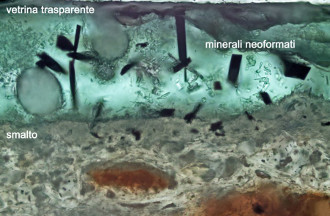
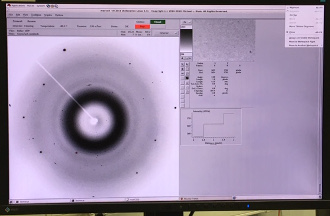
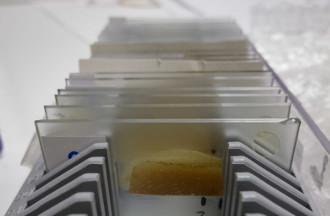
Cerdanyola del Vallès, 18th November 2020 The experiments are part of a collaboration project started about a year ago and which involves the Ceramics Museum of Montelupo, close to Firenze. During the investigations, a total of twenty Montelupine ceramics were analyzed, comprising a wide chronological (14th-19th century), decorative and chromatic ranges, including specimens in late archaic maiolica, saffron, imitation of metallic luster, peacock feather eyes, weapons and trophies and oriental knot to name a few.
To study deeply all these materials, Roberta Di Febo (ICAC-UAB), Lluís Casas (UAB) and Oriol Vallcorba (ALBA), carried out at MSPD beamline X-ray micro-diffraction experiments, whose analyzes focused on the structural identification of relict and newly formed micro-crystalline phases mainly in the decorated areas. These relict and newly formed phases were previously studied in thin section under a petrographic microscope at the UAB and subsequently, by Raman microscopy at the Instituto de Cerámica y Vidrio (ICV-CSIC) of Madrid. The data collected so far will ultimately be integrated with electron microscopy analyzes (SEM-EDS) both on the glazes and on the decorations.
The different microanalytical techniques used will provide useful information to reconstruct the technological processes used for manufacturing, both regarding the raw materials used as well as the firing conditions (use of pure pigment or mixed with other dyes, oxidizing or reducing firing environment, etc.). Furthermore, as the micro-crystalline phases present in the ceramic glazes are excellent technological markers, they will be able to provide information on the knowledge and technical skills of the craftsmen, their knowledge of the physical behavior of the materials or the transfer of technical knowledge between distinct regional productions.
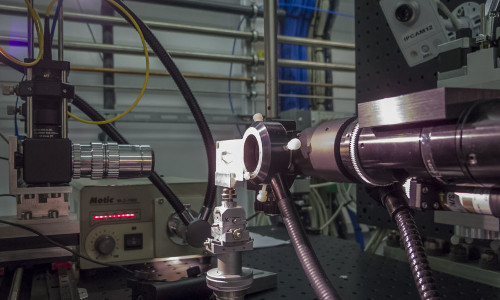
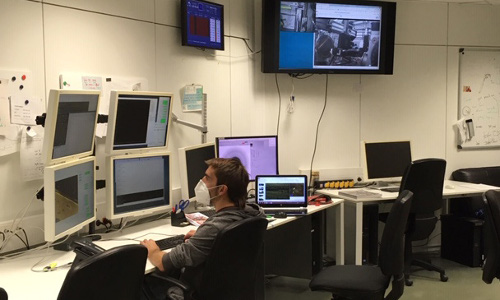
General view of the MSPD beamline at the ALBA Synchrotron. The image shows in the foreground the thin section of the ceramic sample mounted on a support and the camera for viewing the sample during the analyzes.
Adapted from: Museo Montelupo




